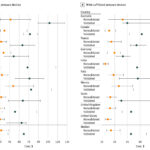You have surely seen ads for a smartwatch with blood pressure monitor. Take, for example, iHeal 6 by Kospet. It offers not only blood pressure measurements, but also blood glucose control, blood oxygen saturation and measurements of heart rate. All for $50.
Kospet is a Chinese manufacturer, with a subsidiary in the USA. The sensor technology advertised by Kospet is possible on a smartwatch, on its website, Kospet states that the results of the measurements should not be used for medical purposes, but for a reference only: “KOSPET smartwatches do not belong to medical apparatus. The heart rate, blood pressure and other health data collected by it are only for reference rather than clinical basis.”
Notebookcheck.com wrote several articles about devices by this manufacturer. In the most recent one, they write that “the advertised blood glucose measurement is unlikely to be accurate under any circumstances” and that “the precise measurement of blood pressure is also likely to be an exaggerated advertising promise”. Also, they note that “the blood glucose curve shown by Kospet as a demonstration also seems absolutely unrealistic”.
The Second Example Among 44 Available at Amazon
FITVII is another example. It is the smartwatch that comes first, when you search “blood pressure smartwatch” at Amazon. The manufacturer claims that the device “employs sensor technology to measure blood pressure precisely”. However, there is no information available on any independent validation of this device.
In the FAQ, the manufacturer lists the question “Is the device FDA-approved?” with the answer “Not all blood pressure monitors are FDA-approved”. Well, the company has a fulfillment center in the USA and sells them at Amazon.com with delivery to the USA for $47.99, while in the United States, blood pressure monitors are considered medical devices and are classified by the FDA as Class II medical devices, which means that before a blood pressure monitor can be legally sold in the U.S., the manufacturer must seek approval from the FDA by providing evidence that the device is reasonably safe and effective for its intended use.
There are a quite few similar wearables on the market that claim to measure blood pressure. The search on Amazon returns 44 results in the category of “Smartwatches with Blood Pressure Monitor”. In the recent review of the problem, The Healthy writes: “Typically, these devices use the technology available on a wrist-worn tracker, which works much differently than an upper-arm cuff monitor. Their smart device process gathers data in a different way using the optical sensor. It serves to “approximate” blood pressure instead of giving you a true reading.”
Approved wearables for blood pressure measuring
So far, very few wearable devices to measure blood pressure have been verified by medical doctors and approved for use by the relevant health authorities. We found only 4 such devices.
- Omron HeartGuide: This is the first wearable blood pressure monitor that received FDA clearance. It uses the oscillometric cuff method for measuring blood pressure and can store up to 100 recordings. The device was cleared by the FDA in December 2018.
- LiveMetric’s LiveOne: This wearable blood pressure monitoring technology received FDA 510(k) clearance (which means it is safe to use). It is a wrist-worn device that uses nano-sensor technology to monitor blood pressure every 10 seconds. The FDA clearance for LiveOne was announced on August 17, 2022. The device will be available at major retailers in later 2024.
- At CES2024, The Accurate 24 BPM from Accurate Meditech is an FDA-approved, calibration-free blood pressure monitor that can be worn with a lanyard or with a wrist holder. The portable, wearable device measures blood pressure, blood oxygen and core body temperature.
- The Aktiia Bracelet, a wearable continuous blood pressure monitor, has been approved and validated in Europe. It has received its CE mark as a Class IIa medical device, which means that the device has been assessed to meet safety, health, and environmental protection requirements in Europe. The device has been clinically validated after 15 years of peer-reviewed development and clinical trials. It has been validated for clinical use according to the ANSI/AAMI/ISO 81060-2:2013 protocol.
Why so few validated wearables so far?
Why are there virtually none validated wearables? A smartwatch with blood pressure monitor is still a novelty. The scientists have developed standards for testing the accuracy only of traditional digital, cuff-based blood pressure monitors. These standards don’t apply to available consumer cuffless devices and can’t be used to validate their accuracy, says Dr. Ramakrishna Mukkamala, Professor of Bioengineering at the University of Pittsburgh, who has studied cuffless blood pressure technologies.
There are several reasons why there are few validated and approved wearables to measure blood pressure.
- Lack of Standards: There are no complete and universally accepted standards for the validation of cuffless blood pressure devices. The most advanced standard to date is the IEEE Standard for Wearable, Cuffless Blood Pressure Measuring Devices – Amendment 1, amended in 2019. However, this standard does not explicitly specify the application of intervention required for producing reliable measurements.
- Accuracy Concerns: The accuracy of wearable blood pressure monitoring devices has been controversial due to the low signal quality of sensors. Wrist measurements have so far failed to prove as accurate as those from a cuff.
- Calibration Issues: Some devices must be calibrated with a validated cuff-based device before use in each patient. Users of some devices must calibrate the blood pressure monitor every 28 days.
If you still want to buy a smartwatch with blood pressure monitor
There are several factors to consider:
- Clinical Validation: Ensure the device has been clinically validated for accuracy. This means it has been tested and approved by health authorities or recognized institutions in the country of distribution, but at least in the country where it was manufactured. Was it recognized as a medical device? What is just approved as safe to use, but its measuring results were not clinically validated?
- Technology Used: If the answers to the previous questions are negative, try to understand the technology used by the device to measure blood pressure. Some devices use pulse arrival time (PAT) or photoplethysmography (PPG), but these methods have not yet been properly validated. Search for and read independent assessments of the technology employed to measure blood pressure.
- Calibration: Some devices require regular calibration with a traditional blood pressure cuff to ensure accurate readings.



